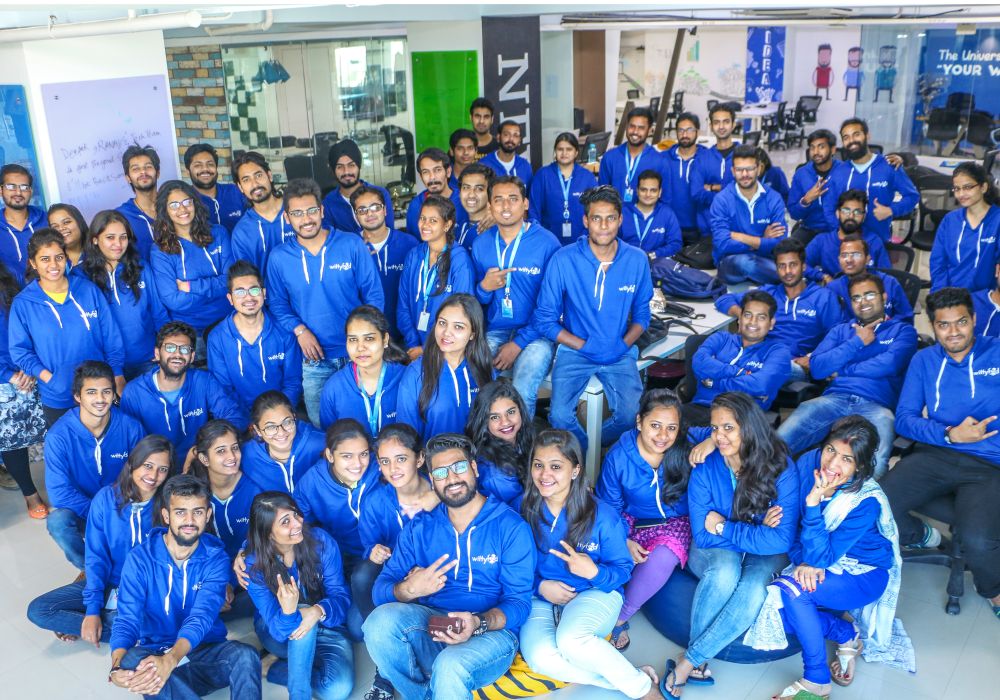India is the land of the hopeful dreamer.
For a population that has only now started drifting above the poverty line, and with urbanisation and digitisation fast ushering in a new era of the rural-urban youth, these hopeful dreamers have taken the proverbial bull by the horns to prove their worth – by starting up.
SRM Engineering College in Chennai, like the IITs and IIMs, too has bred a certain kind of hopeful dreamer, the startup entrepreneur. It was at engineering college that eventual business partners Parveen Singhal, Vinay Singhal, and Shashank Vaishnav and their classmates met each other for the very first time. All of them had two things in common – they were passionate and insatiably curious about tech and they were all from the Tier II towns in India, tasting the pleasures of a metropolis like Chennai for the first time.
“We actually began with making our Orkut/FB accounts on the Internet. That was our first introduction to the net,” begins Shashank. “And we started following the major entrepreneurs like Apple’s Steve Jobs, Zuckerberg and others who were making a big splash globally, news about them even trickled down to us,” he adds.
Shashank, Vinay, and Parveen, were in their first year of engineering, and like typical geeks, decided to experiment with technology – by creating their very first free website called www.badlegabhaarat.com.
“We are all ardent patriots, and it was election year of some sort, so we thought, why not give out information on all our politicians for the voters to consider before they cast their vote?” The idea was executed quite successfully.
And, just like that, with the creation of a public service website, the entrepreneurial bug bit them all, the bug that led to the creation of a bootstrapped startup valued at $45 Mn in the media and entertainment space called WittyFeed.
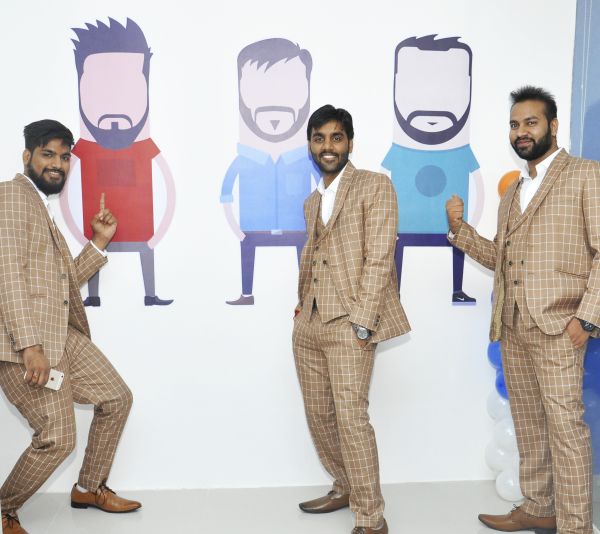
7 Partners, 1 Company And The Emergence Of Content Marketing As A Viable Business Model
“Our first company was called Vatsana Technologies,” says Shashank. “It is an amalgam of all the founder names and it means ‘State’ in Thai, something that resonated with us. I distinctly remember the day we formulated the company, May 8, 2010, in between the hiatus of study leave before our first year engineering exams,” he recalls, with a chuckle.
Vatsana Tech was launched in order to fund the innovation needs of the group of friends. It was started as a simple IT company that would build websites for clients, regardless of sector and need.
“We’d spend our daytime in second-year classes, 7 am to 4 pm, and then in the evening and late into the night, we’d work on the company. In the two years that we ran Vatsana Tech, we learnt how to build apps, websites, learnt client servicing, sales and marketing. Our on the job training was immense,” says Shashank.
According to Shashank, weekends too were devoted to building the company, while frivolous and fun activities were left for later. A decision they do not regret even now.
“It taught us the value of building a business, the various aspects of running one – our knowledge expanded from just tech and tech-related subjects,” he shares.
And then, as it often happens, the IT moment occurred – one of the co-founders started an ad hoc Facebook Page called ‘Amazing Things In The World,’ which was literally a page that posted pictures of amazing things in the world, and it went viral. As per Shashank, the page had 6 Mn visitors within 6 months.
“It was right then that we understood how powerful content could be, understood the importance of content itself,” says Shashank. “Facebook is very restrictive when it comes to the kind of content it allows you to post on the platform. And we couldn’t do more than a few posts a day, as compared to the 1000s of emails we would get from interested users who wanted to send us more amazing things around the world.”
And this was the beginning of content creation for the team, a philosophy they follow even now.
TheStupidStation.com, FollowMe24x7: A Beginning And An Ending
Shashank shares that the team decided to put their collective expertise to good use and built www.thestupidstation.com in 2013. The purpose of the website was an extension of the Facebook Page, to post engaging content for the users, by the users. This simple strategy was so successful again, that according to Shashank, the site had gained an Alexa ranking of 5K, worldwide.
The team also began to problem solve a unique pain point for students in colleges. “Colleges don’t have the best Internet, and students on a budget could not afford to use the data packs anyway. And at the same time, teachers needed to keep in touch with students – inform them of class timing changes, exam questions and project submissions etc. But we looked around and found there was no single app or website addressing this issue,” says Shashank.
Thus, FollowMe24x7 was born. A simple, no-frills app that required no Internet to facilitate teacher-student interaction. Teachers, even HODs on the SRM campus got in on the app and it was soon seeing a traffic of 1 Mn messages every day, according to Shashank. “We even expanded to IIT Indore and a few other colleges as people started seeing the unique value proposition offered by the app,” he says.
But, as the Vatsana team expanded its app reach, it realised that FollowMe24x7 was a great app, it wasn’t scalable. And scale was required if the business needed to generate revenue.
“On the other hand, StupidStation was heavily focussed on content, publishing. This led to eventual monetisation, through affiliate marketing tactics. And for a few months, we ran both websites side by side, until we couldn’t focus our energies on FollowMe and do justice to the viable business model of StupidStation so we shut it down.”
Thus, StupidStation, the very first version of the platform known as WittyFeed today, began its solo journey in the world of new age media publishing.
Returning To Roots: Indore Becomes Home Base
 2014 was a year of reckoning for the Vatsana team, the way Shashank tells it.
2014 was a year of reckoning for the Vatsana team, the way Shashank tells it.
“We ran StupidStation for a good long year but then had to shut down in 2014, when we ran into branding issues. ‘StupidStation’ did not exactly inspire confidence in clients and customers and I guess we were stupid to think it would work,” he reminisces with a smile. “That was when we decided to rename the site EvryStory.”
When prompted, Shashank shares that the pronunciation was the same as the words ‘every story’ but it was written very differently.
“Our traction figures remained the same, but people got confused by the name. Evrystory.com did not have the same ring as everystory.com, the domain name that already existed. But we soldiered on, pouring out content while still trying to understand the kind of brand, and branding we wanted to stand for,” he shares.
The team graduated from engineering college and took a momentous decision – that of going back to its small town roots. “June 25, 2014,” states Shashank with perfect recall. “That was the day we decided to move our base to Indore. My hometown. A Tier II city with no startup community to speak of.” It was this basic idea, that the city was desperately in need of an entrepreneurial community that would help other aspiring founders and turn Indore into a startup hub, that prompted the move.
“Of course, it did help that being a relatively smaller city, our initial costs were low – in terms of overheads, expenses etc.,” says Shashank.
WittyFeed: The Phoenix That Rose From A Google Accounting Disaster
Life, as they say, could not be better for the young, startup-hungry team. But then, not even a month later, on July 12, 2014, catastrophe struck. “We had about $70K in revenues in our company account. But Google put a ban on all our accounts and we couldn’t access anything anymore – no data, no email, nothing. We were quite literally broke.”
The candid confession was followed by the usual course of action – the company had no money to pay the salaries of the employees, which was its primary responsibility.
“We still remember, we called in the team, 25 of them who had followed us to MP and told them, ‘We are broke and have no money as of now to pay your salaries. The choice of staying or leaving is up to you.’ And would you believe it? Not a single one of them left. Everyone stayed,” shares Shashank, with a fond smile.
As Shashank tells it, the next three months were the most crucial for the company as it tried to do two things – generate revenue and fix its vision and mission which would lead to the creation of a brand-new product. “We started a print magazine of ‘Amazing Things In The World’ which, of course, did not pan out. And we decided, as a team, that we would not be working with Google anymore in terms of sales and marketing. In our subsequent panchayat (group meeting) we started brainstorming for a better name than all the existing ones we’d come up with so far – not stupid, not every story, nothing like that. And that’s how WittyFeed was created,” he adds.
When prompted, he says with touching candour that the name was a team effort, the credit cannot be given to any one person. “It was a collective team decision and we have stuck by it so far.”
Energised by the naming of their brand, the company’s founders took the next step in the business model – they tried to raise funding. But, here again, they were met with disappointment at every turn. No one was willing to bet on them enough to invest in them.
“So, what we did was take out a loan in our personal capacities from the local lenders,” shares Shashank, refusing to name the exact amount they had applied for and received. “Our parents and relatives all contributed to the loan too. And we gave ourselves six months – six months for cash burn, create runway and create a profit.”
The deadline to return the loan and emerge profitable was March 2015.
“By god’s grace, we returned the loan with our heads held high and have been profitable since then,” says Shashank, with more than a touch of pride.
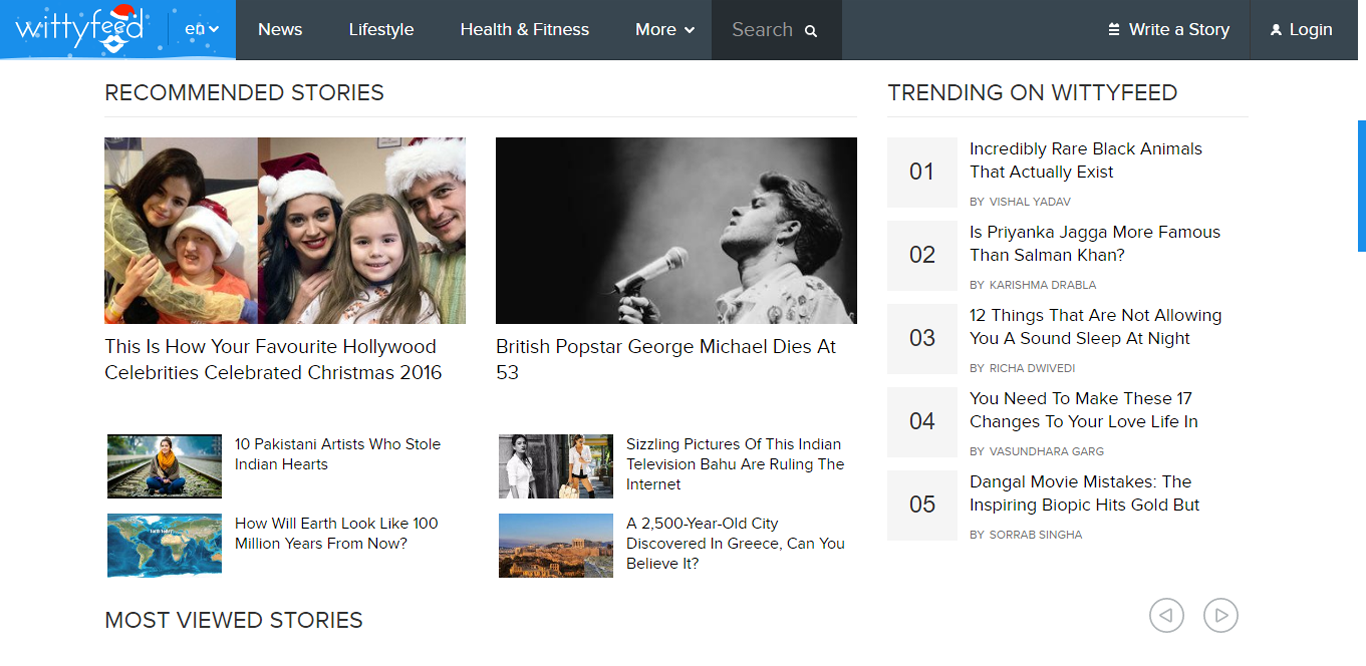
“We Made Relationships With People Our Priority, Not Money”
WittyFeed currently boasts a team of 110 all based out of Indore, Madhya Pradesh – living and working there. The team’s first office space was a smallish 3,000 sq.ft which has now expanded to 12,500 sq.ft to house the team members working across divisions.
“The original 25 members who stuck with us through those lean months, they are still here. In fact, we have this policy of having the team stay with each of the founders. I have this huge apartment, since I don’t live with my parents anymore and it makes it easier to accommodate the team members there – we all live together, eat together, work, and play together,” he shares.
Work culture speaks volumes about the way an organisation does business – as a business is only as good as the employees it keeps. In this regard, WittyFeed seems to have emerged an undisputed winner.
“In the last six years, we did a lot of hard work. But we never did it to make money, not really. We wanted to make relationships with people. Team loyalty means something here,” Shashank says.
But this does not mean that the company is running on fumes alone. As per Shashank, WittyFeed’s existing business model comprises mainly advertisements. “90% of our advertising is programmatic – displays and banners etc.,” he says. “The other 10% is sponsored content, where brands come on our platform and pay us to put their content on our platform. This is so because we can see that sponsored content is finally picking up in India and so we have actually hired sales personnel to go after this clientele,” he adds.
WittyFeed’s content creation model is still based on the ‘Amazing Things In The World’ philosophy. Users come and post and interesting, cool things in the form of posts, videos, listicles and more – entertaining and snackable content. According to Shashank, it has now evolved, of course, to include a variety of topics that come under the purview of pop culture but the basic premise remains the same – click on the link to invite traffic and monetise those numbers.
“We were all engineers when we began, right? So we understood from the beginning how the tech part of it worked. Back during the FB page days, we leveraged the power of affiliate marketing, which works on a pay-per-click module on social media. And because our content somehow clicked with the audience, we were able to retain high traffic, which in turn led to more business and so on so forth,” shares Shashank.
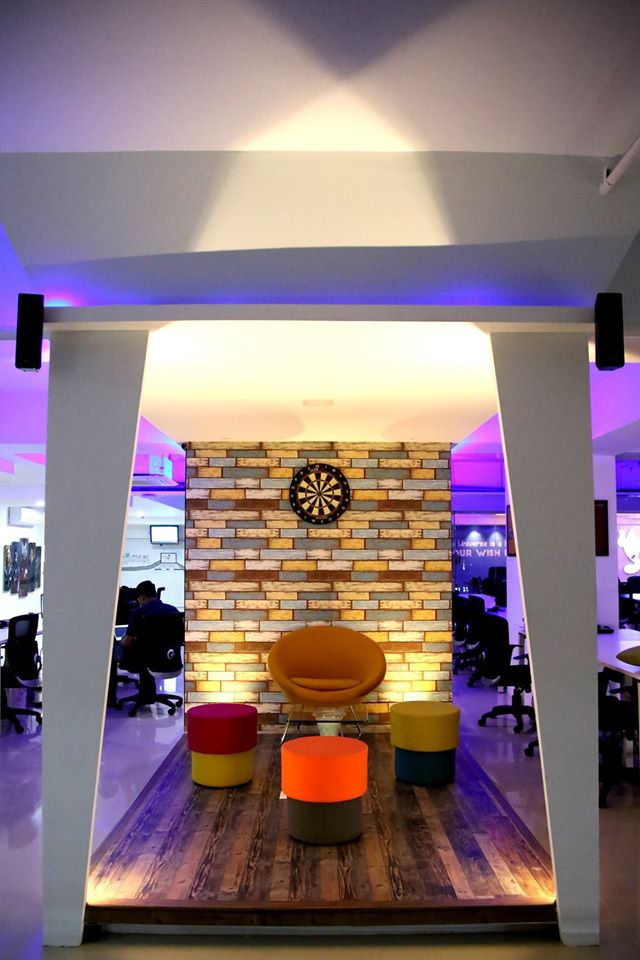
“When Tech And Content Merge Together, It Is Truly Powerful”
This is when the backend of the content company starts to emerge. For instance, according to Shashank, back in September 2014, during its lean period, the company had 15,000 affiliates marketing on or via its platform. The analytics platform of WittyFeed focussed on two things – how best to engage with the consumer and at what time to do so (decide on optimum time of posting). “Our funda is very simple. Content alone is great. Tech alone is great. But it is only when tech and content merge together that it becomes truly powerful.”
Shashank shares with no small amount of pride that it is because of this combination of analytics and timely content that the site is right now at 100 Mn unique visitors. And it is also listed under the Top 40 websites in India on Alexa rankings, while it stands under the Top 300 websites globally. A feat that has not been achieved by many content creator sites in India.
“We also have started a couple of new in-house media properties – Inner Voice And Food Mate,” says Shashank. Inner Voice by WittyFeed is a Facebook Page made up entirely of quotes by individuals, celebrities, movies, books etc. And in the seven months that it began, it has already racked up 1.8 Mn likes. FoodMate is simpler, it is just short videos of food recipes and has racked up more than 1 Mn likes since the few months from when it was launched.
“We understand tech and we understand content, so we know how to reach our audience effectively,” says Shashank to defend these growth numbers.
He is also not shy of revealing the revenue figures for the company, which has reportedly been profitable since 2015. “Our annual revenue last year was INR 26 Cr. And this year it has almost doubled to INR 45 Cr.” It is this kind of revenue that leads to a $30 Mn valuation but this does not mean that WittyFeed is looking to rest on its laurels.
A Fluid Business Model That Hopes To Compete Internationally
“We are already looking forward to the next phase of expansion in our growth. New age media is coming of age in India and we want to take our place by becoming a one-stop publisher for writers and legacy publishers,” he says. When prompted he expands on this with, “We want to open up our existing content platform www.wittyfeed.com and turn it into a formal publishing platform (user-generated content and paid content), wherein publishers and writers can come and publish their content on our domain and leverage our traffic and marketing strategies.”
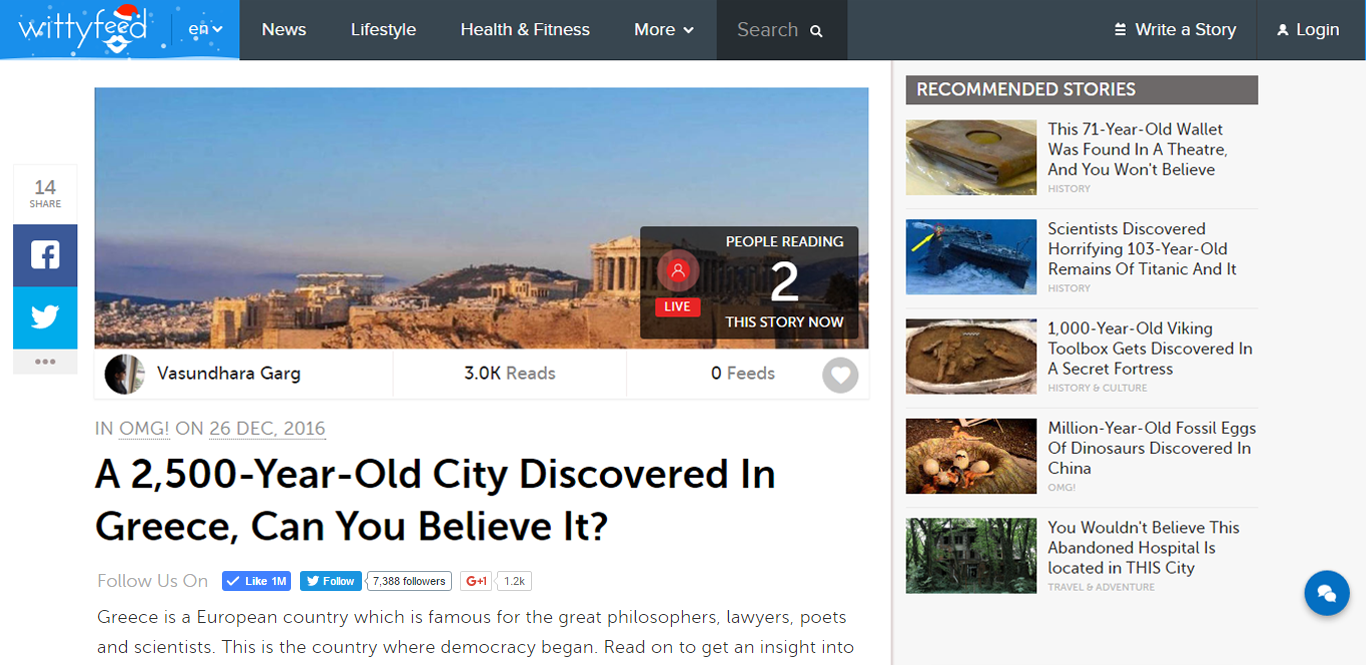
According to Shashank, 25 existing publishers have already come on board to this new way of publishing and are partners with WittyFeed, although he refuses to divulge any names as of now. The reason for this move is explained with, “We wanted to create a platform writers in India. When we looked at the existing content and analysed it, most of the content is not original, and it does not drive traffic which guarantees revenue. Publishers want traffic and that is something we can help with.”
The company is also looking to diversify into video content with a couple of web series to be launched in 2017 – created in-house in a studio built on the WittyFeed premises. It has also expanded into regional languages such as Tamil, Punjabi, Bengali, and Marathi in order to cater to the colloquial audience.
With a firm grip on revenues and a fluid business model that accounts for changing market trends, it is hard to imagine the kind of competition WittyFeed faces. But Shashank is quick to point out that in India platforms such as ScoopWhoop, FilterCopy could be considered contenders in terms of content if not numbers. Globally, it is sites like Diply.com, PopSugar etc., whose unique users range in the hundred millions.
“We are hitting our numbers in the country, but to even compete globally we need a minimum of 300 Mn unique users,” he says. WittyFeed plans to reach these numbers by expanding to the US and UK and build out traffic. Shashank admits candidly that it is planning to reach out to influencers in pop culture – Hollywood celebrities and NBA players in the US and content publishers, media personalities in the UK to promote the site and bring in engaged users.
“We have been wary of needing money since no one believed in us when we needed them to, and since we turned profitable, it seemed unnecessary to want to raise funding back then. Now, though, it’s different,” he concludes with a small smile.
For a completely bootstrapped company that was started in a college dorm room, the journey seems to be just beginning.
Editor’s Note
With consumers becoming king in the media space and with the delicate line between advertising and unbiased media blurring by the day, it is but obvious that new age media is a whole new animal. It requires new rules and a new kind of understanding of the relationship that the average millennial consumer-audience has with publishers, both legacy and new age. While platforms such as FilterCopy, ScoopWhoop and others have gained in popularity their numbers still have a while to catch up with those of WittyFeed.
WittyFeed, on the other hand, has very recently jumped on board the video waggon wheel with its web series and recipe verticals, a market that has well been captured by other, more established platforms both in India and globally, as well. But with a sound business model, young co-founders (none of them are over 30), and millions in revenue, it does seem to be on the right track to going the distance.
How far it will succeed in breaking out on the top in the global arena, how much will its video efforts pay off while marketing itself becomes a whole new ballgame is a question for the ages. One whose answer we look forward to in the coming months.
[Note: This article is part of The Junction Series. We will be covering the Media and Entertainment sector in detail at The Junction 2017 in Jaipur. Learn more about The Junction here!]
Update 1: 2nd November 2017
Wittyfeed’s valuation has been updated to $45 Mn from $100 Mn.



